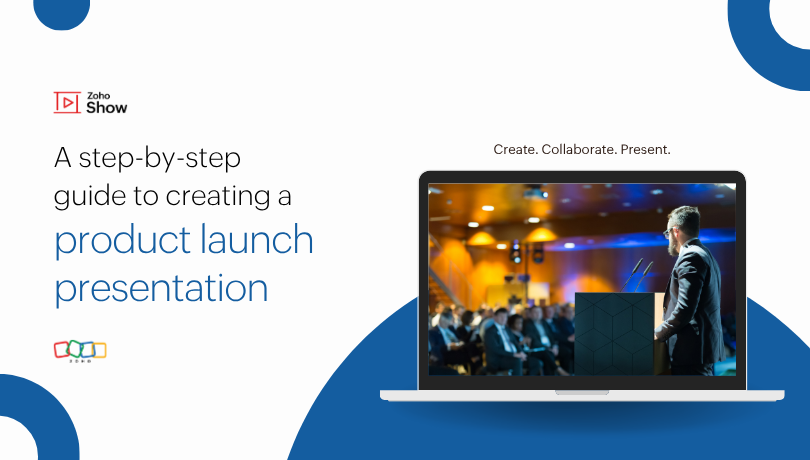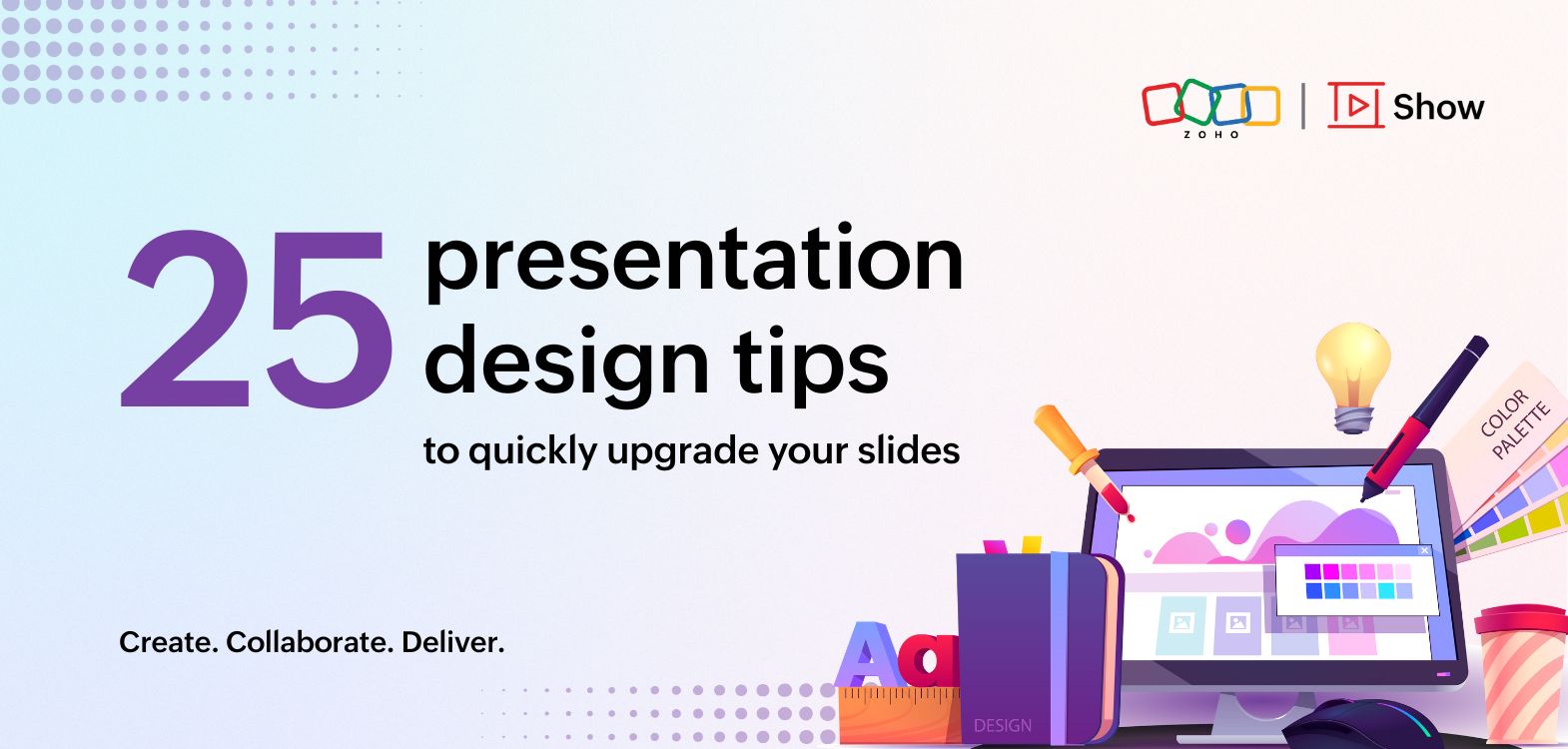- HOME
- Design & deliver
- A step-by-step guide to creating a product launch presentation
A step-by-step guide to creating a product launch presentation
- Last Updated : September 30, 2025
- 176 Views
- 7 Min Read

A successful product launch is more than creating a well-designed slide deck. It requires months of planning, research, strategy, execution, and targeted marketing, all leading toward a high-stakes moment—the launch.
This is where you capture attention, spark curiosity, and inspire action. Whether you’re pitching to investors, announcing a new offering to customers, or aligning your internal team, a compelling presentation can shape how your product is received.
In this blog, you will learn the step-by-step guide to creating a successful product launch presentation. These steps will help you plan, design, and deliver with impact.
What is a product launch?
A product launch is the process of introducing a new product or service to the market. It involves various marketing and promotional activities with the goal to create buzz and get your customers excited about the offering.
Among the many tools that drive a successful launch, a presentation is one of the most powerful tools to communicate your product story and value in an impactful way.
Why should every business have a product launch presentation?
A launch presentation conveys the essential information about your product in an engaging format. It helps:
- Keep your audience hooked by communicating your brand value, key message, core idea, and product functionalities to your audience in a compelling manner.
- Showcase features and benefits and demonstrate how your product solves a specific problem or fulfills a customer need.
- Incite excitement and motivate your audience to take the next step, be it registering, signing up, purchasing, subscribing, or enquiring about the offering.
Step-by-step guide to creating a successful product launch presentation
Here are eight steps that will help you create a successful product launch presentation.
Step 1: Define your launch goals and audience
Begin by defining the objective of the presentation (e.g, build brand awareness, secure investment or invite partners) and identifying your audience—potential customers, press, partners, or internal teams. Align presentation objectives with the overall launch strategy so every slide moves toward the same goal.
Step 2: Craft a compelling narrative
Level up your launch presentation with storytelling to resonate with your audience and drive your message home. One of the best storytelling techniques is to start with the customer's pain point, reveal how the product solves it, and show the impact. You can also humanize the story by using a customer anecdote or a surprising statistic to capture attention.
Step 3: Structure the presentation deck
Once you have the narrative, outline the deck. A well-structured deck keeps the audience engaged and guides them through your story.
- Opening statement: A fact, question, or statistic that captures attention.
- About us: Talk about your organization and the products and services it offer.
- The problem: Briefly highlight the market gap or pain point.
- The solution: Introduce your product and explain how it addresses the problem.
- Key features: Show what makes your product unique and valuable.
- Product snippets: Showcase product screenshots and demo snippets.
- Call to action: Conclude with the next step of actions required.
Remember to limit each slide to one main idea to avoid overwhelming your audience with information.
Step 4: Design for impact
Great design elevates your story and keeps attention on your product. Keep your slides clean with minimal text and use icons instead of bullet points. Include product screenshots or short videos to give a real glimpse of the product or service. Maintain brand consistency with fonts, colors, and logos.
Step 5: Perfect your demo
If you’re giving a live demo, script the flow, highlight key features, and repeatedly test on the platform, browser, or network. Prepare a backup video or screenshots in case of technical issues, and keep the demo brief and closely tied to the problem you introduced earlier.
Step 6: Rehearse and refine
Practice multiple times to perfect your timing and delivery. Time yourself and make sure the presentation fits within the allotted window, leaving space for Q&A. Another thumb rule is to avoid reading directly from the slides. If necessary, practice in front of colleagues or friends to gather valuable feedback and work on pacing, tone and body language.
Step 7: Launch day
This is the ultimate moment where all the months of planning will lead to. Check the lighting, sound and other technical setups to avoid any glitches. Network and engage with the audience, conduct Q&A sessions, or use live polls to make it interactive. Be prepared in case of technical faults and have a backup plan. Remember to stay calm if any issue arises.
Step 8: Post-presentation follow-up
Launch doesn't end with introducing the product and service to the world. Follow-up and send thank-you emails to the attendees and share the presentation if needed. Collect feedback using surveys to understand what worked and what did not. Track sign-ups, press mentions, or internal adoption to measure success and guide future launches.
Bonus: Checklists for product launch
Are you planning a product launch? Here are some phase-by-phase checklists to help you along the way.
Pre-launch checklist (Planning & preparation)
Here are some pre-launch checklists that help you plan and lay the groundwork for a smooth and impactful launch:
Research and strategy
- Conduct market and competitor research to understand demand, customer needs, and pain points.
- Define clear objectives for your launch. E.g., brand awareness, sign-ups, sales, media coverage.
- Identify audience segments for the launch, such as customers, press, partners, and internal teams.
- Align your marketing, sales, and product teams with launch goals.
- Set a launch date and budget to guide planning and team coordination.
Branding and messaging
- Develop brand positioning, vision and mission statements.
- Finalize the product name, tagline, and other brand assets and collaterals.
- Design the product launch presentation deck and demo materials.
Product development and testing
- Complete final QA testing and resolve bugs.
- Prepare demo version or trial accounts if applicable.
- Create user documentation, FAQs, and onboarding materials.
- Set up support channels like chat bots, emails and help desk.
Marketing and PR
- Build awareness through email campaigns, social media and online ads.
- Draft press releases and prepare media kits.
- Create pitch decks, landing pages, blog posts, pricing pages, explainer videos, and product teasers.
Launch-day checklist (Execution)
Checklist to ensure a seamless event and flawless product launch:
Technical setup
- Test all AV equipment -TVs, projectors, microphones and speakers.
- Check sign-up/registration links, internet connection, and backup devices.
- Verify website performance for loading speed and uptime.
- Confirm analytics and visitor tracking links are active.
Presentation
- Rehearse the full presentation and live demo flow.
- Test videos, audio, survey, and polls embedded in the presentation.
- Prepare a contingency plan in case of technical glitches or disruptions.
Marketing activities
- Publish your social posts, blog articles, videos and ads.
- Launch email campaigns and press releases as per the schedule.
- Monitor social channels, track sign-ups, and respond to inquiries in real time.
Post-launch checklist (Follow-up & growth)
Checklist to measure success and keep momentum going.
Audience engagement
- Send thank-you emails to attendees and early adopters.
- Share product guides, tutorials, and onboarding resources.
- Collect feedback and testimonials from early users.
Media & PR
- Follow up with journalists, bloggers, and influencers.
- Track media mentions and share coverage on brand pages.
Performance tracking
- Monitor key metrics like sign-ups, conversions, sales, website traffic, social engagement, email performance, and press coverages.
- Compare results against launch objectives.
Product feedback and improvement
- Address bugs or usability issues reported by early users.
- Release quick fixes or updates based on feedback.
- Plan retention campaigns and outline next product features.
Wrapping up!
A great product launch presentation isn’t just about compelling content. It also depends on the right presentation software. Choosing a platform that supports effortless creation, real-time collaboration, brand consistency, and audience engagement can make all the difference in delivering an impactful launch.
Zoho Show offers everything you need to create a powerful product launch presentation. From ready-to-use templates, a brand library to store assets, Zia (AI assistant) to generate content, and built-in surveys to engage with your audience, this is a one-stop solution to create your launch presentation. With the right tool at your side, you can focus on delivering a presentation that captures attention, tells your product story, and inspires action.
Frequently asked questions
Here are answers to common questions about creating and delivering a product launch presentation.
1. What is a product launch presentation?
This is a structured, visual pitch used to introduce a new product to customers, investors, media, or internal teams. It tells your product’s story, highlights key features, and inspires action.
2. How can I create a winning product launch presentation?
Start with research and audience analysis to understand their needs. Build a clear, compelling narrative supported by high-quality visuals, product screenshots, and live demos. Highlight key benefits and end with a strong call to action.
3. What are the key elements of a product launch presentation?
Open with an attention-grabbing hook, problem statement, product solution (with demo), key features and benefits, social validation (testimonials), and a clear call to action.
4. How long should a product launch presentation be?
Aim for a 20–30 minute presentation, plus 10–15 minutes for Q&A. Use the first 15–20 minutes to cover the most important information, when audience attention is highest.
5. When should I start preparing the presentation?
Begin 4–6 weeks before launch to finalize messaging, design slides, rehearse, and allow time for refinements.
6. What makes a launch deck visually appealing?
Consistent branding, clean layouts, minimal text, strong visuals (product screenshots, videos), and well-timed animations.
7. How can I keep the audience engaged?
Open with a bold statement or story, use visuals instead of paragraphs, and add interactive elements like live polls or Q&A.
8. How should I handle a live demo during the presentation?
Prepare the script for the demo, create demo accounts, populate data to showcase the flow, test it on the actual setup during rehearsals, and keep a backup video or screenshots ready in case of technical glitches.
9. Should I share the presentation after the launch?
The best practice is to email the presentation with the attendees post the launch. You can also upload it to your website or share key slides on social media to extend the reach and build momentum.
10. How do I measure success?
Track KPIs such as sign-ups, downloads, press mentions, demo requests, and audience feedback to evaluate the success.


